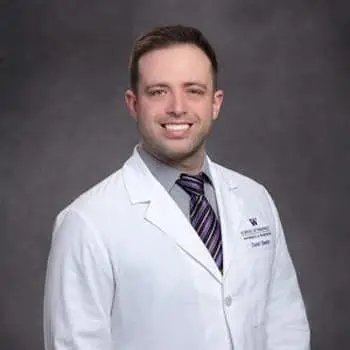Valium is a prescription benzodiazepine used for panic and anxiety disorders; in some people, it can also be used to treat seizure disorders such as epilepsy. Benzodiazepines like Valium can be abused and lead to physical dependence. When someone is physically dependent, the body has become so used to the drug that withdrawal symptoms would occur if you stop using it suddenly.
Valium is a Schedule IV substance according to the U.S. Drug Enforcement Agency (DEA), meaning it has an accepted medical use but the potential for abuse. Whether Valium is misused or taken exactly as prescribed, withdrawal symptoms can occur after using it for long enough and at high enough doses.
In addition to dependence, Valium has a high potential to be habit-forming, so Valium detox is crucial to remove the drug from their system before beginning the rest of addiction treatment. Detox is considered the first stage of addiction treatment, and it involves the body “rewiring” itself to function normally without the drug.
Valium, like other benzodiazepines, can have profound effects on the brain and nerve activity in users, and sometimes dependence can occur after only a few weeks. Valium and other benzodiazepines commonly require addiction treatment after prolonged use.
This Season, Give Yourself the Gift of a Fresh Start.
Whether you are struggling with addiction, mental health or both, our expert team is here to guide you every step of the way. Don’t wait— reach out today to take the first step toward taking control of your life.
Stopping Valium
For people who are dependent on Valium, especially heavy or long-term users, a tapering schedule can be optimal to help manage Valium withdrawal. This means that smaller and smaller doses are administered under medical supervision to wean the person off the drug gradually. This doesn’t necessarily mean that withdrawal symptoms won’t occur at all, but it can help lessen their severity as compared to quitting cold turkey, or suddenly stopping.
The purpose of a taper schedule is to lessen withdrawal symptoms and increase the chances of successfully stopping the drug. Benzodiazepines commonly cause severe withdrawal symptoms, and a person might continue taking the drug to stop these symptoms. When a person returns to prior drug misuse, it is called “relapse.”
Anyone with a Valium dependency can benefit from a taper schedule, but dependency and addiction are different conditions. Dependence is characterized by withdrawal symptoms, while addiction is characterized by changes in behavior that lead someone to get Valium at the cost of their social, financial and occupational health. If a person is both dependent and addicted, they may benefit more from a professional medical detox than a taper.
See Related: Valium Taper
Valium Addiction Withdrawal Symptoms
Many potential valium addiction withdrawal symptoms are possible.
Physical symptoms of Valium detox include:
- Headache
- Low appetite
- Muscle aches
- Nausea
- Heart palpitations
- Poor concentration
- Restlessness
- Seizures
- Trouble sleeping
Along with physical symptoms of Valium detox, psychological symptoms include:
- Agitation
- Anxiety
- Confusion
- Delirium
- Depression
- Hallucinations
- Irritability
- Memory problems
- Paranoia
Psychological symptoms can be the biggest challenge for someone with a Valium use disorder to overcome.
The specific Valium detox schedule depends on several factors, including how heavily they used the drug and whether or not they were simultaneously using or misusing other substances.
Because of the dangers that come with Valium detox symptoms, a professional treatment facility is the best option. Detox centers such as The Recovery Village at Palmer Lake in Colorado help people manage withdrawal symptoms, and then the patient can move on to a treatment program once detox is complete.
Not only is a professional center important due to health risks such as seizures, but detox is also a time when many people relapse. Professional help can increase the chances of successfully completing detox.
Some medications may also be helpful during Valium detox; antidepressants may be prescribed. This can help treat withdrawal symptoms and any co-occurring mental health issues identified by the initial patient evaluation. Some medications may be administered to help patients sleep, and anticonvulsant medicines can be used to prevent seizures.
Factors that Impact Withdrawal
Everyone’s experience of withdrawal will be different, depending on their unique circumstances and characteristics. Some factors that affect withdrawal include:
- Age: Adults older than 65 may experience prolonged withdrawal.
- Body composition: Diazepam is a lipophilic substance, meaning that it prefers to move into fat tissue. People with higher fat content may experience a longer duration of withdrawal.
- Dosage: The severity of symptoms is directly related to the dosage taken, with higher dosages making the process longer.
- Length of use and misuse: People who misuse Valium for many months or years will have a more challenging withdrawal than those taking it for a short period.
- Use of multiple substances: Polysubstance abuse is a risk factor for worsened withdrawal symptoms because a person will experience withdrawal symptoms from multiple drugs at once.
Valium Withdrawal Timeline
Every individual is different, but for most people who are dependent on Valium, the following represents a general Valium withdrawal timeline:
- The first day: Because diazepam is a long-acting drug, a person will be relatively symptom-free during the first day of abstinence.
- Days 2–7: The acute stage of Valium withdrawal usually occurs during this time. The half-life of Valium can be relatively long compared to many other benzos, which translates to a delayed onset of withdrawal symptoms. Acute symptoms are mostly physical, such as nausea, vomiting, headaches and stomach cramps. In some cases, tremors and psychological symptoms may also occur.
- Weeks 2–8: Acute and chronic symptoms will persist during this extended period of time. Generally, symptoms are psychological and include depression, anxiety and insomnia. However, physical symptoms like tremors and seizures may also occur.
- Over eight weeks: After symptoms peak, they may begin to subside. However, the withdrawal effects of benzodiazepines are extremely variable. Some people may experience chronic symptoms for months or years, but the majority of symptoms will subside after 4–8 weeks.
The Valium Detox Process
Valium detox can be a long, uncomfortable process. Valium and similar drugs are considered to have the longest detox of any substance of abuse. It is important to consider different options when considering detox. It’s possible to detox at home, but it is much safer to do so in a treatment facility.
A treatment facility has trained medical professionals that can ensure the detox process is safe and successful. The risk of relapse during this period is extremely high.
Evaluation
During intake, a medical professional evaluates the severity of addiction and estimates the timeline for medical detox. It is important to be honest at this time because it will help determine the level of care needed.
Stabilization
Benzodiazepine withdrawal can be dangerous but is rarely life-threatening. The most severe conditions are dehydration and rebound seizures. During detox treatment, the medical team will watch for and manage these conditions. Other symptoms are treated as needed with medication or behavioral management.
Further Treatment
Medical detox in a treatment facility will often transition into addiction treatment after detox is over. Treatment is most successful after someone has fully completed detox and is free from substance use.
Can You Detox from Valium At Home?
Yes, you can detox from Valium at home, but it is significantly riskier than doing so in a treatment facility. Because of the length of detox from benzodiazepines, people detoxing at home may find fulfilling their regular obligations challenging.
If you decide to detox from home, speak with your doctor first. Your doctor may help you with the detox process. They can prescribe a benzodiazepine taper that helps reduce side effects and increase your chance of success in recovery.
Valium Detox in Colorado
If you or someone you know struggles with a Valium use disorder, The Recovery Village at Palmer Lake provides a range of addiction treatment services, including outpatient, partial hospitalization, intensive outpatient and inpatient/residential services.
If you’re in Denver, Boulder, Colorado Springs or anywhere else in Colorado, there are Valium detox options available to you at The Recovery Village at Palmer Lake. Our skilled specialists are awaiting your call.
For those outside of Colorado, we have a variety of treatment facilities in different locations across the United States. Valium addiction can consume a person’s life, so take the first steps towards treatment and contact us to get started on your recovery journey.









